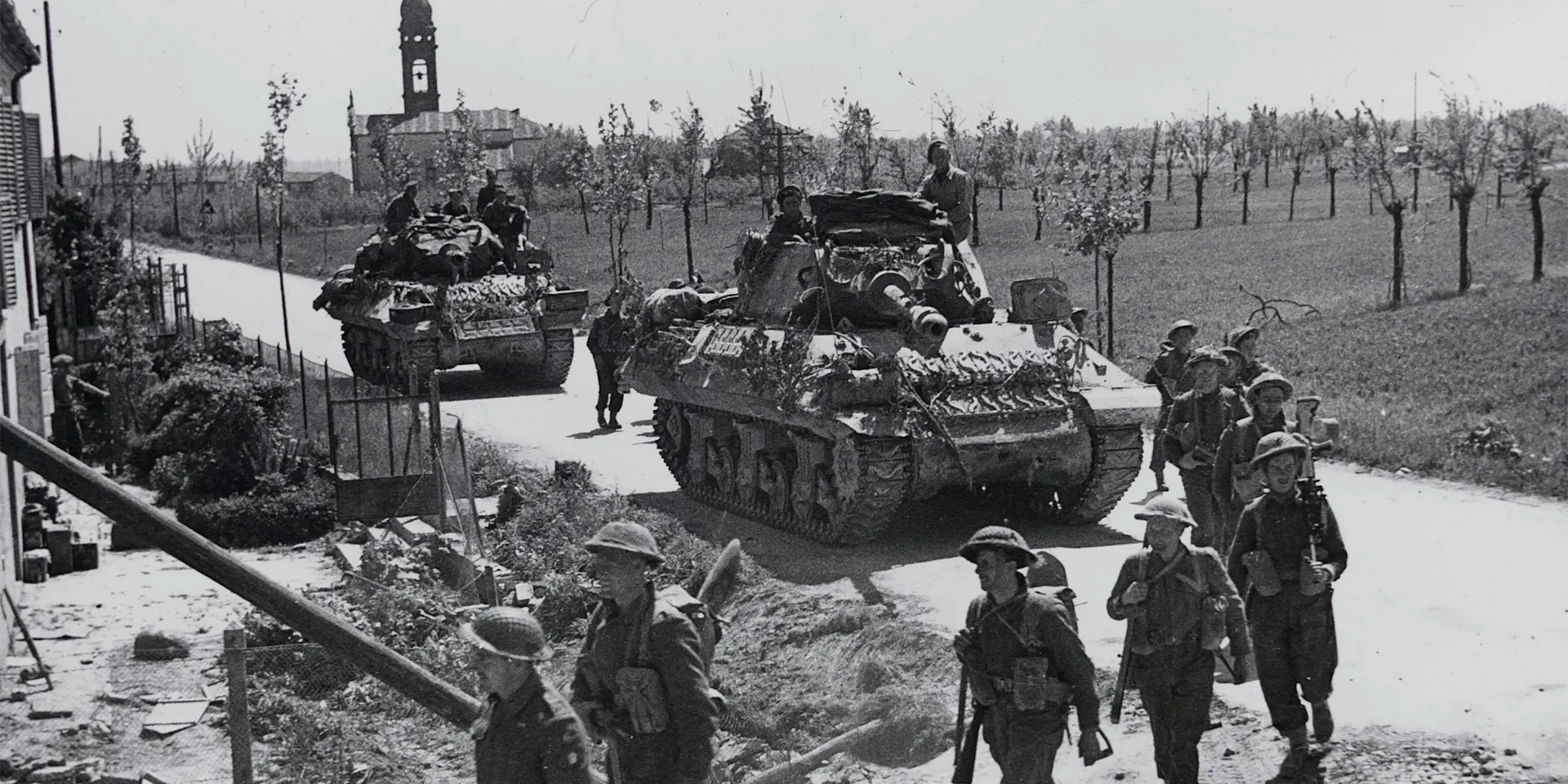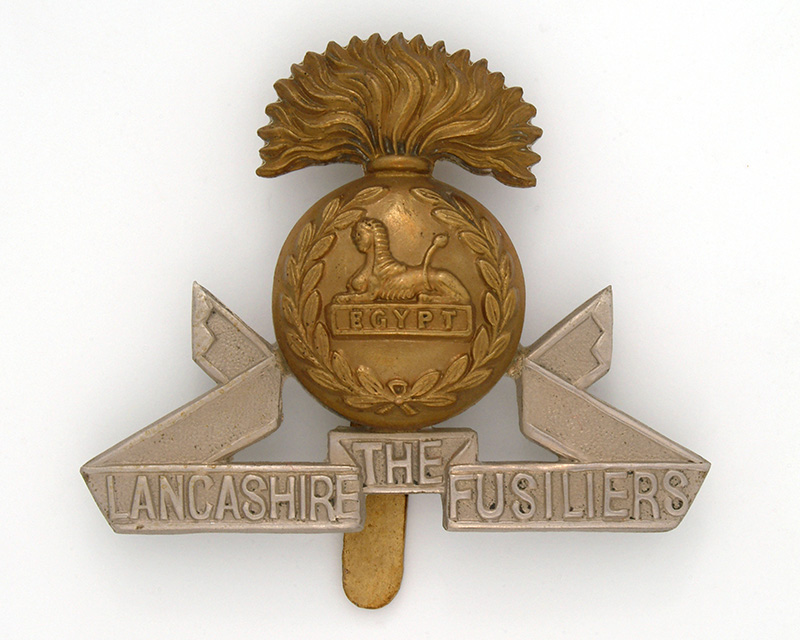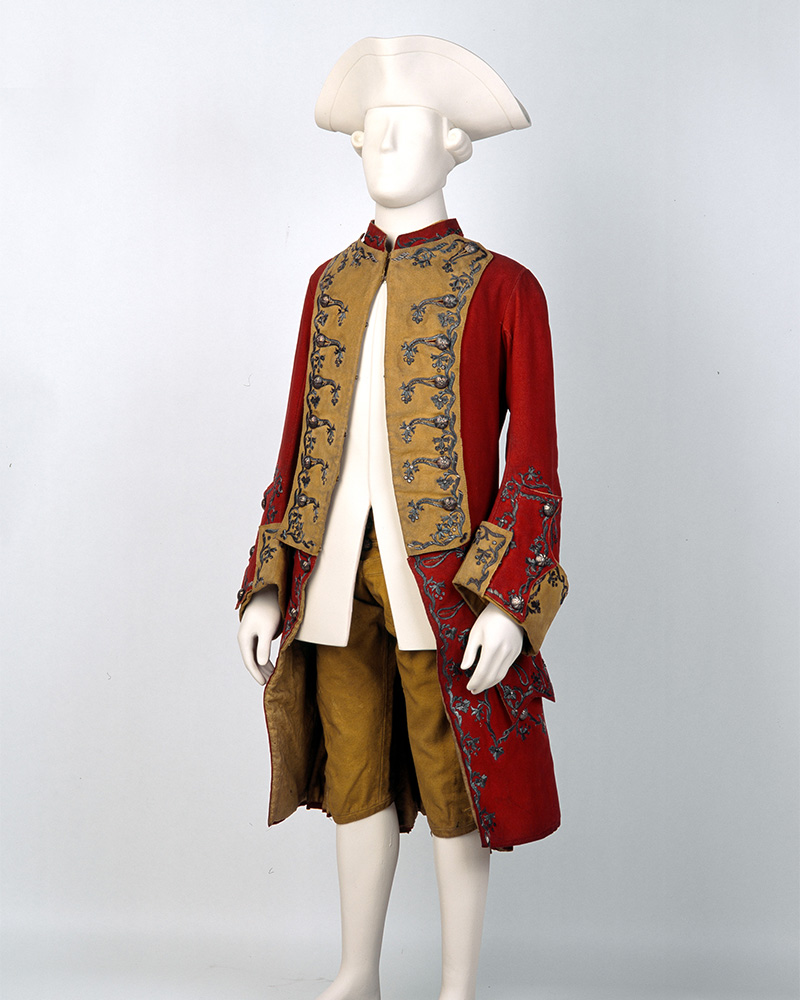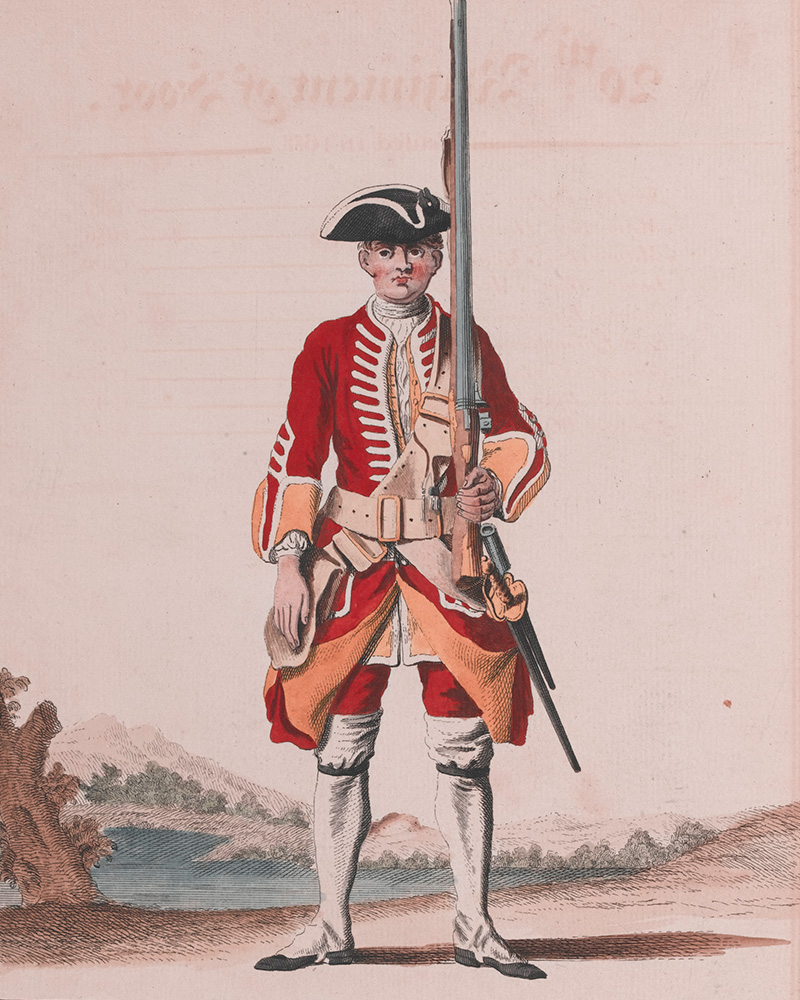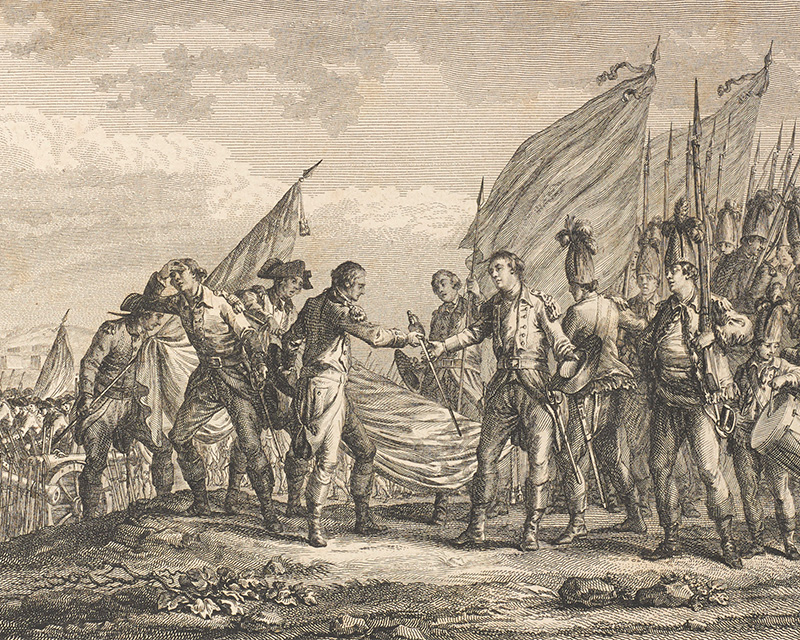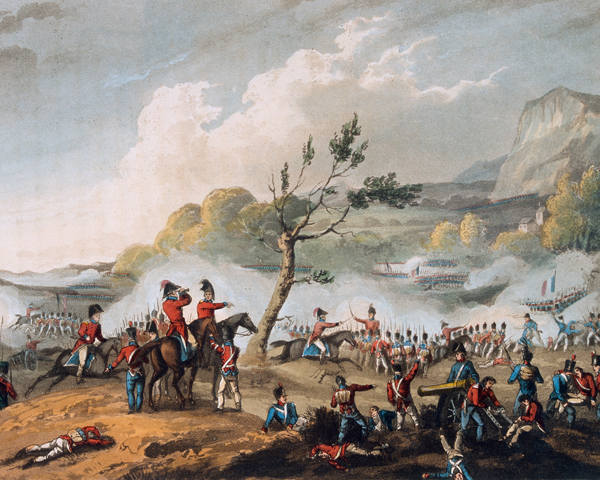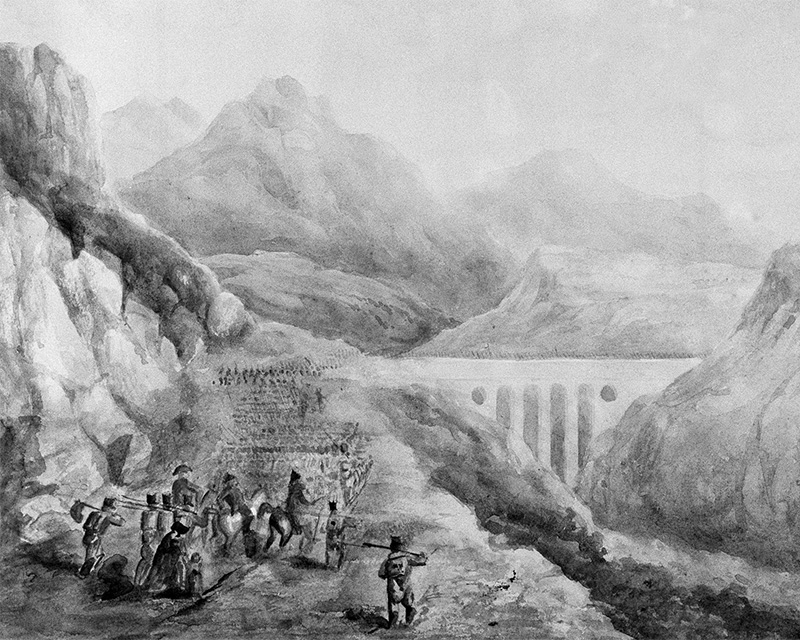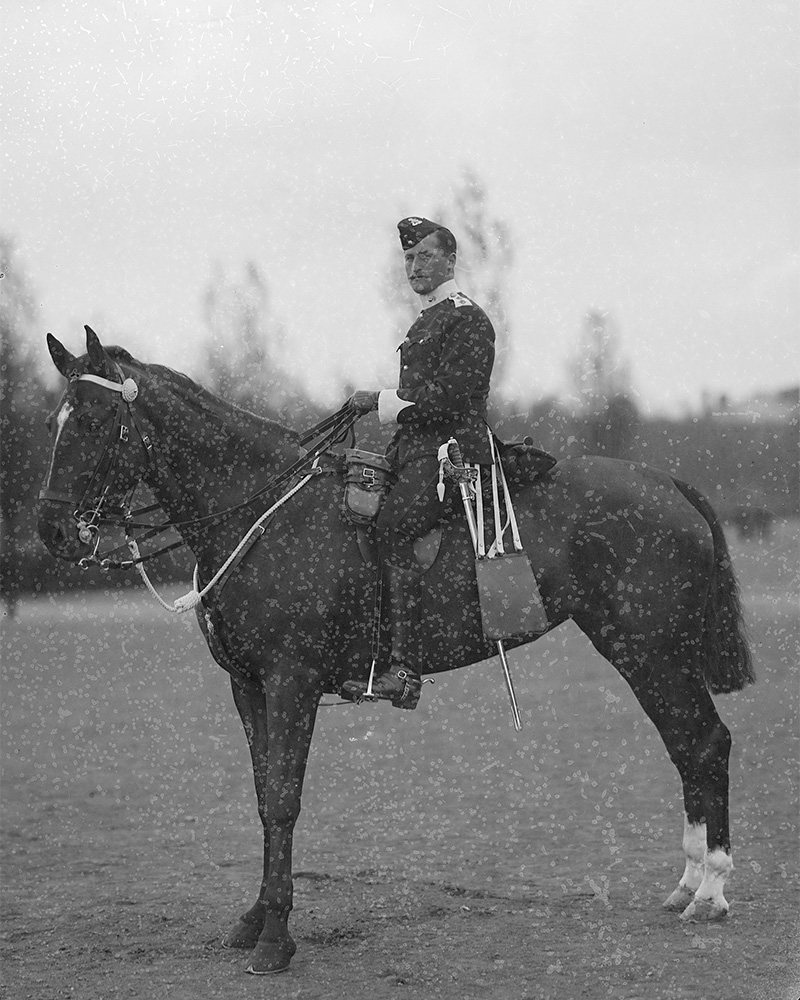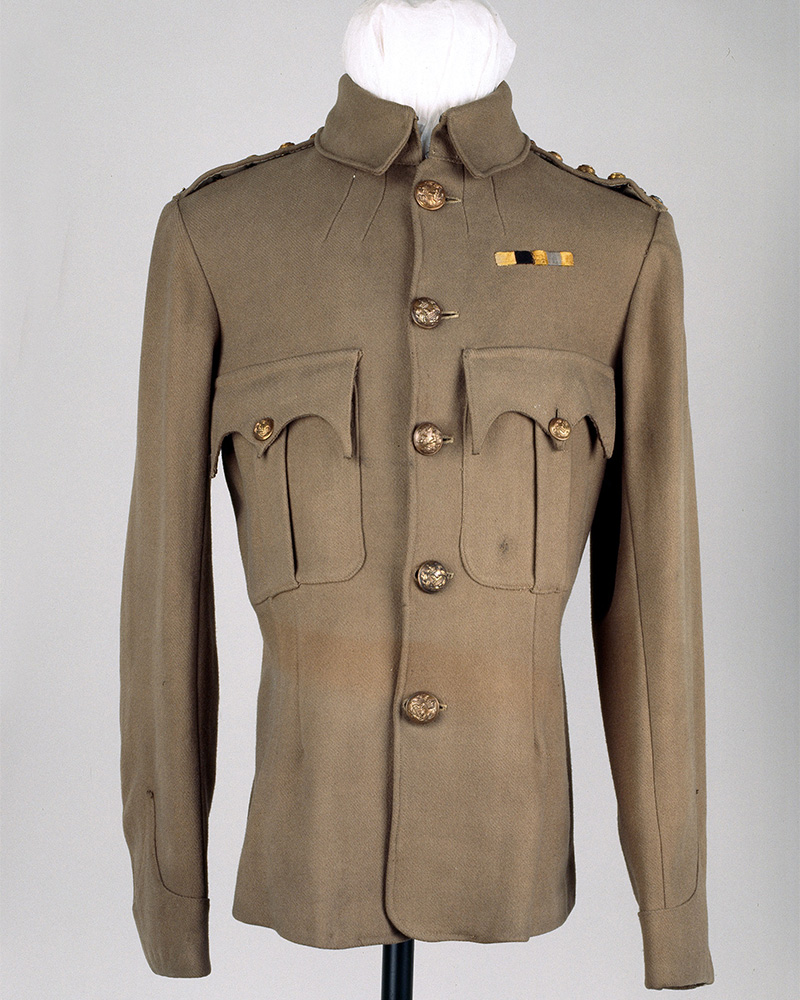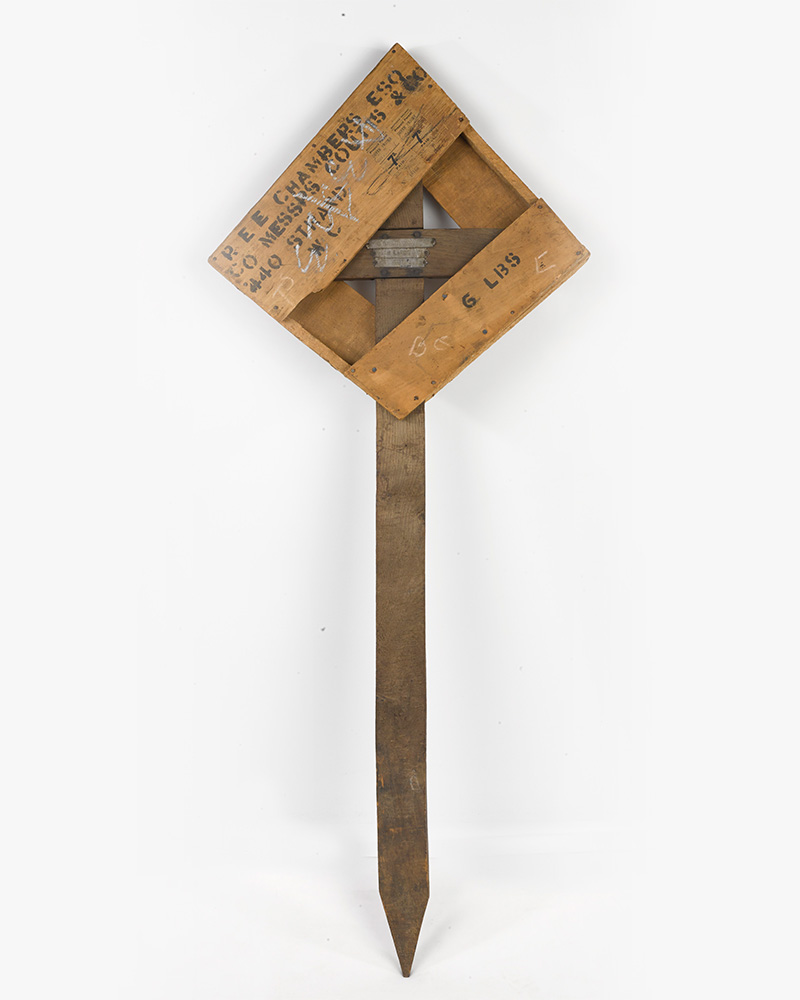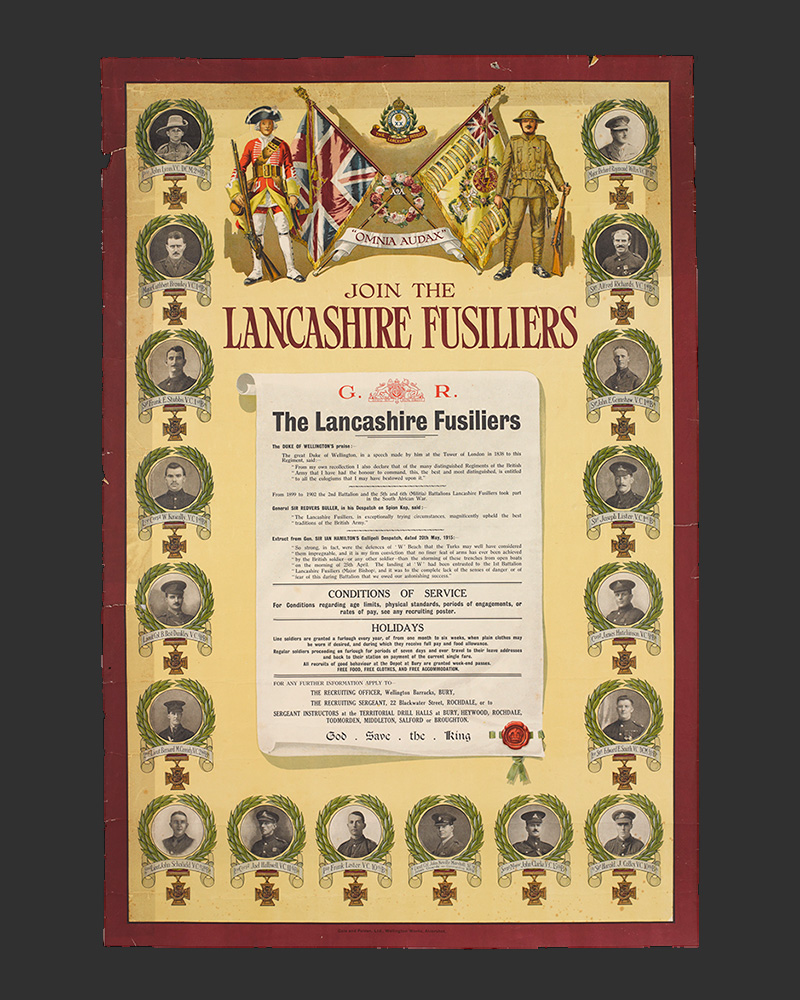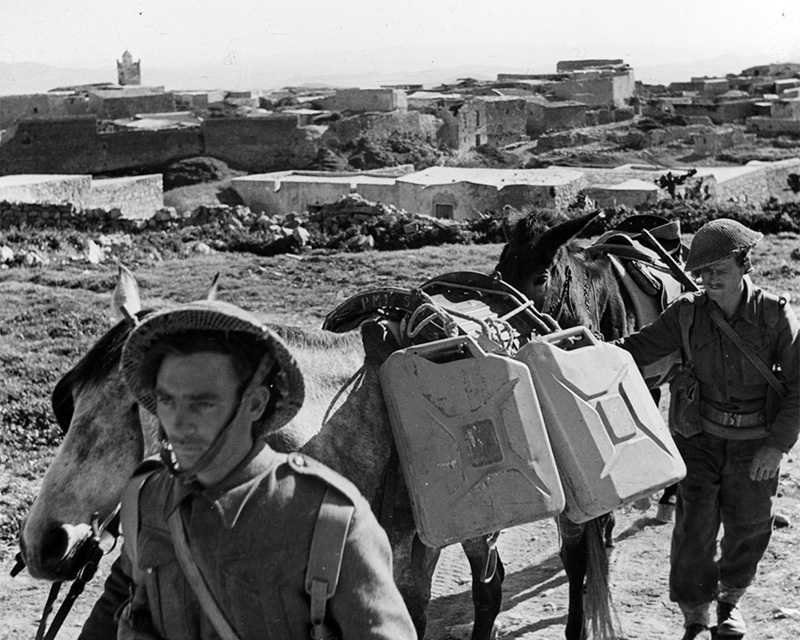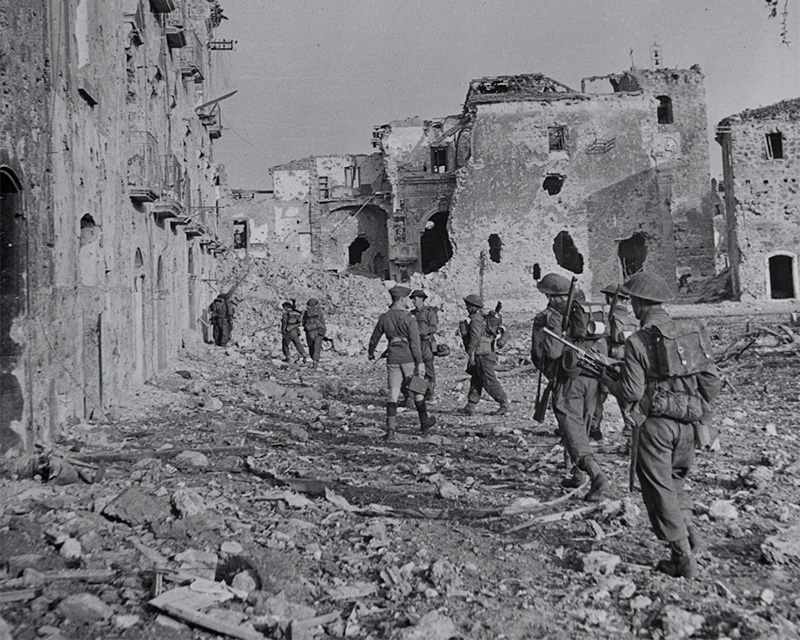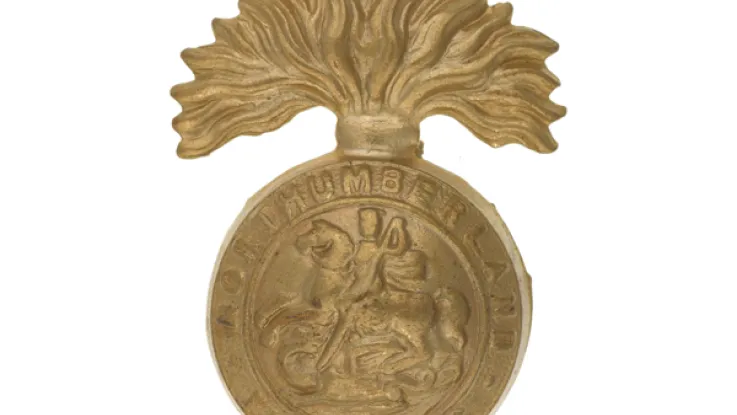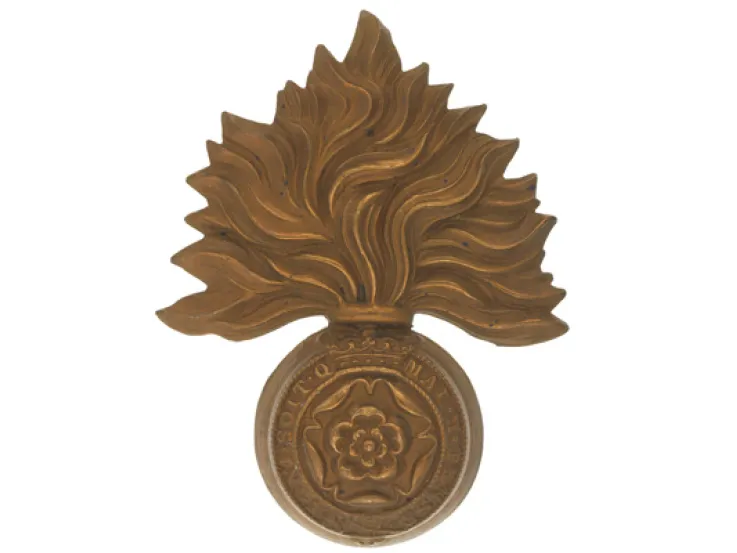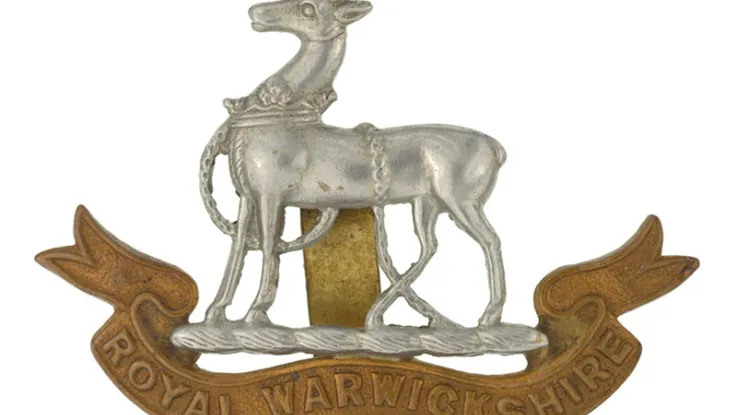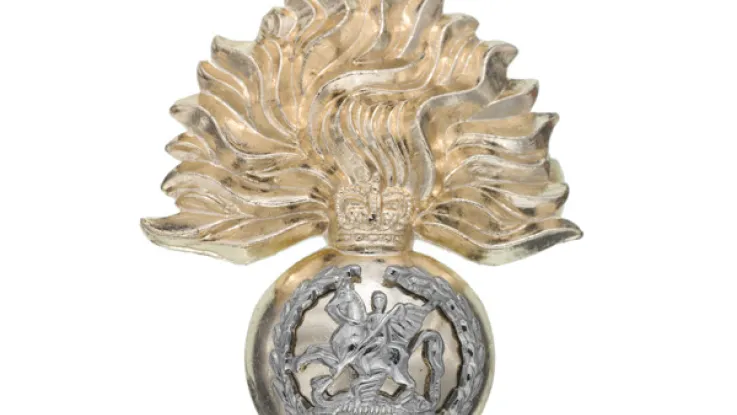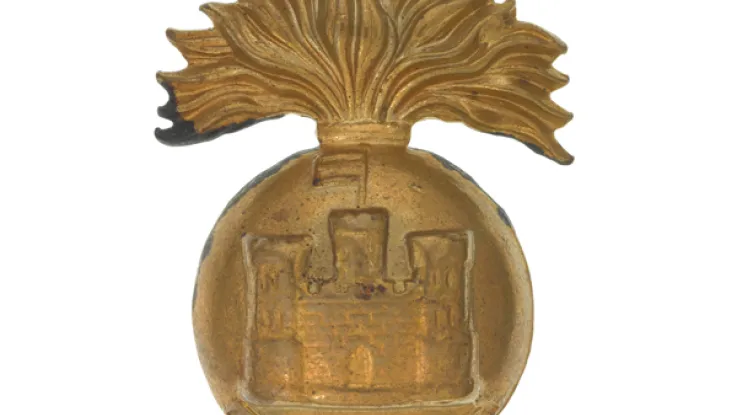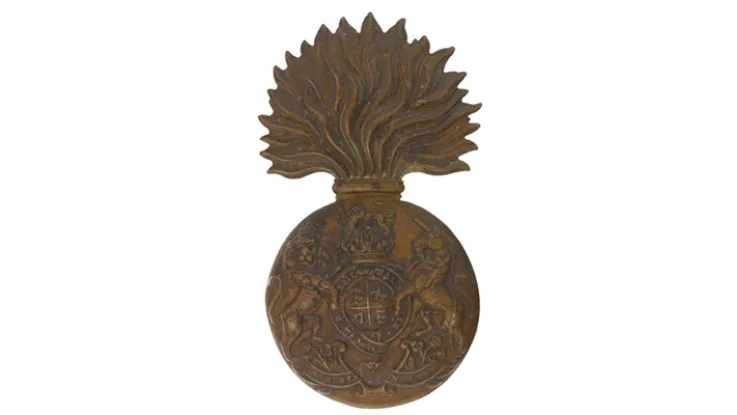Origins
In 1688, William of Orange commissioned Sir Robert Peyton to raise a new regiment in Devon to support his cause during the ‘Glorious Revolution’. The following year, this unit was deployed to Ireland, where it fought for William at the key battles of the Boyne (1690) and Aughrim (1691).
Early 18th century
In 1702, during the War of the Spanish Succession (1702-13), the regiment served in raids along the Spanish coast, including at Vigo Bay. At the end of the war, it carried out garrison duties in Britain’s newly acquired territory of Gibraltar.
In the War of the Austrian Succession (1740-48), it fought at Dettingen (1743) and Fontenoy (1745). At the former engagement, James Wolfe served as acting adjutant of the regiment. He later fought with it against the Jacobites at Culloden in 1746.
In 1751, the regiment was given a new title, the 20th Regiment of Foot, reflecting its position in the line infantry order of precedence.
Late 18th century
Early in the Seven Years War (1756-63), the 20th Foot was used for raids on the French ports of Rochefort and St Malo. It then served at Minden (1759), where it helped break a French cavalry charge, despite being outnumbered.
During the American War of Independence (1775-83), the regiment served at Quebec (1776) and Saratoga (1777), where it surrendered with General Sir John Burgoyne. Its men were then interned in Massachusetts and Pennsylvania until April 1783, when it sailed for England.
In 1782, the unit’s local ties were recognised, when it became the 20th (East Devonshire) Regiment of Foot.
French Revolutionary and Napoleonic Wars
During the French Revolutionary Wars (1793-1802), the 20th Foot was deployed to the West Indies (1792-96), the Helder campaign (1799), the Quiberon Bay landings (1800), and Egypt (1801).
Service in Italy and Sicily followed in the early years of the Napoleonic Wars (1803-15). The regiment played an important part at the Battle of Maida (1806), which was the first decisive defeat of a Napoleonic army in Europe.
The regiment fought in several major battles during the Peninsular War (1808-14), earning particular distinction at Corunna (1809) and Vittoria (1813), and pursuing the enemy across the Pyrenees into France. Its final battle in the campaign was at Toulouse (1814).
In 1819, the 20th Foot was sent to guard Napoleon during his final exile on the island of St Helena. Men of the regiment’s grenadier company were tasked with carrying his coffin to its place of burial in 1821.
Victorian period
Overseas service for the remainder of the 19th century included the Crimean War (1854-56) – where it fought at the Alma, Inkerman and Sevastopol – and the Indian Mutiny (1857-59). The latter deployment included the final capture of Lucknow in 1858.
The regiment raised a 2nd Battalion in 1858. It had done so before in 1799, but this had only lasted three years. The new unit served on garrison duties in India, China, Japan, South Africa and Mauritius during the 1860s, before a decade in England and Ireland.
In 1873, the regimental depot was moved to Bury (part of Lancashire at the time), breaking its longstanding ties with Devon. As a result, it was renamed The Lancashire Fusiliers in the Army reforms of 1881.
2nd Battalion returned to India in 1881. It then fought at the Battle of Omdurman (1898) in the Sudan, before joining the Boer War (1899-1902) the following year. Its service in South Africa included action at Spion Kop in January 1900 where the battalion suffered very heavy casualties. Following the Relief of Ladysmith (1900) it was sent home. It was replaced by volunteers from the 6th (Militia) Battalion who took part in the anti-guerrilla campaign.
First World War
During the First World War (1914-18), The Lancashire Fusiliers raised 30 Regular, Reserve, Territorial, Garrison and New Army battalions, with its men serving on all the major fronts. The author JRR Tolkien served with the 13th Battalion on the Western Front in 1915-16.
During the Gallipoli landings of April 1915, 1st Battalion’s heroic performance at Cape Helles famously resulted in the awarding of ‘six Victoria Crosses before breakfast’.
Second World War
On the outbreak of the Second World War (1939-45), 1st Battalion was based in India. It subsequently fought with various formations in Burma until 1943 when it became a Chindits formation with 77th Indian Infantry Brigade. It served with the latter until the end of the campaign.
2nd Battalion deployed to France with the British Expeditionary Force in 1939. It fought there in 1940 until being forced to retreat to Dunkirk, from where it was evacuated back to Britain. The battalion remained at home until late 1942, protecting against German invasion. It then deployed to North Africa for the Tunisian campaign (1942-43), before serving in Sicily (1943) and Italy (1944-45), where it helped break the Gothic Line.
The regiment also raised 15 additional Territorial and hostilities-only battalions. These served at home, in France and Germany, Malta, North Africa, Sicily, Italy, India and Burma.
Post-war deployments
At the end of the war, the regiment served as occupation troops in Austria. Its two regular battalions were merged in 1948.
The following decade, it deployed to Egypt (1950), Kenya (1952), West Germany (1953-56) and Cyprus (1957). It returned to West Germany in 1960 and then deployed to British Guiana (now Guyana) in 1965. Its final overseas posting, prior to amalgamation, was to Hong Kong in late 1967.
Legacy
In 1958, the regiment had joined the three other English fusilier regiments in The Fusilier Brigade. Ten years later, in 1968, all four of these regiments merged to form The Royal Regiment of Fusiliers.
Regimental museums
The National Army Museum works with a network of Regimental and Corps Museums across the UK to help preserve and share the history and traditions of the Army and its soldiers.
Discover more about The Lancashire Fusiliers by visiting The Fusilier Museum in Bury.

